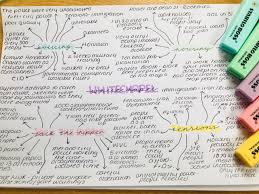Differential association
Cards (8)
- what is the differential association theory?
- explanation of defending behaviour in terms of learning theory
- how interactions with others lead to formation of attitudes about crime (favourable/unfavourable) and how to commit them
- state the main principles of Sutherland's theory
- people vary in frequency as to how much they associate with people who have more/less favourable attitudes towards crime
- these attitudes influence their own attitudes and behaviour
- Sutherland believed it was possible to mathematically predict whether or not someone would turn to crime using formula (linking frequency/duration/intensity of social contacts)
- what is learned in the DAT?
- child learns attitudes towards crime (undesirable/desirable)
- child will learn which crimes are acceptable/desirable (ie worth doing) within their neighbourhood (eg- not violent but burglary)
- learns about specific methods to committing crimes
- what three aspects of DAT are focused on?
- what is learned
- who it's learned from
- how it's learned
- who is crime learned from in the DAT?
- intimate personal groups (eg like family)
- wider neighbourhood- degree to which neighbourhood supports criminal behaviour (differential social organisation)is what determines the difference in crime rates from one area to another
- individuals or social groups may not be criminals but may still hold deviant attitudes
- how is crime learned according to the DAT?
- frequency, length and personal meaning of associations determine degree of influence
- social groups also establish norms by which we define behaviour
- mode of learning likely to be direct and indirect operant conditioning
- eg- child may be directly reinforced for deviant behaviours through praise, or be punished for such behaviours
- role models model behaviour
- if models are successful provides indirect (vicarious reinforcement)
- state three of the nine key principles of Sutherland for DAT
- criminal behaviour is learned rather than inherited
- learning is directional- either for or against crime
- learned through associations with others
- evaluation of DAT?
- 😊more info about the origins of criminal behaviour- shift from blaming individual factors to social ones, learning enviros changed.
- 😊evidence- Osbourne and west- 40% of sons with criminal fathers commit crime, 17% with non criminal fathers- attitudes are result of social learning but could also be genetic
- ☹absence of bio factors- diathesis stress= more accurate account/evidence- conc rate of delinquency between twins
- ☹methodology- hard to investigate and distinguish between learned/innate influences, and what ratio of bad to good attitudes determine criminality?
